
How to Use LI-PO BATTERY: Examples, Pinouts, and Specs
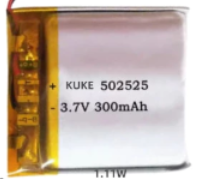
 Design with LI-PO BATTERY in Cirkit Designer
Design with LI-PO BATTERY in Cirkit DesignerIntroduction
A lithium polymer (Li-Po) battery is a type of rechargeable battery that uses a polymer electrolyte instead of a liquid electrolyte. This design allows for a lightweight, compact, and flexible form factor, making it ideal for applications where size and weight are critical. Li-Po batteries are known for their high energy density, low self-discharge rate, and ability to deliver high current, making them a popular choice in portable electronics, drones, RC vehicles, and electric vehicles.
Explore Projects Built with LI-PO BATTERY
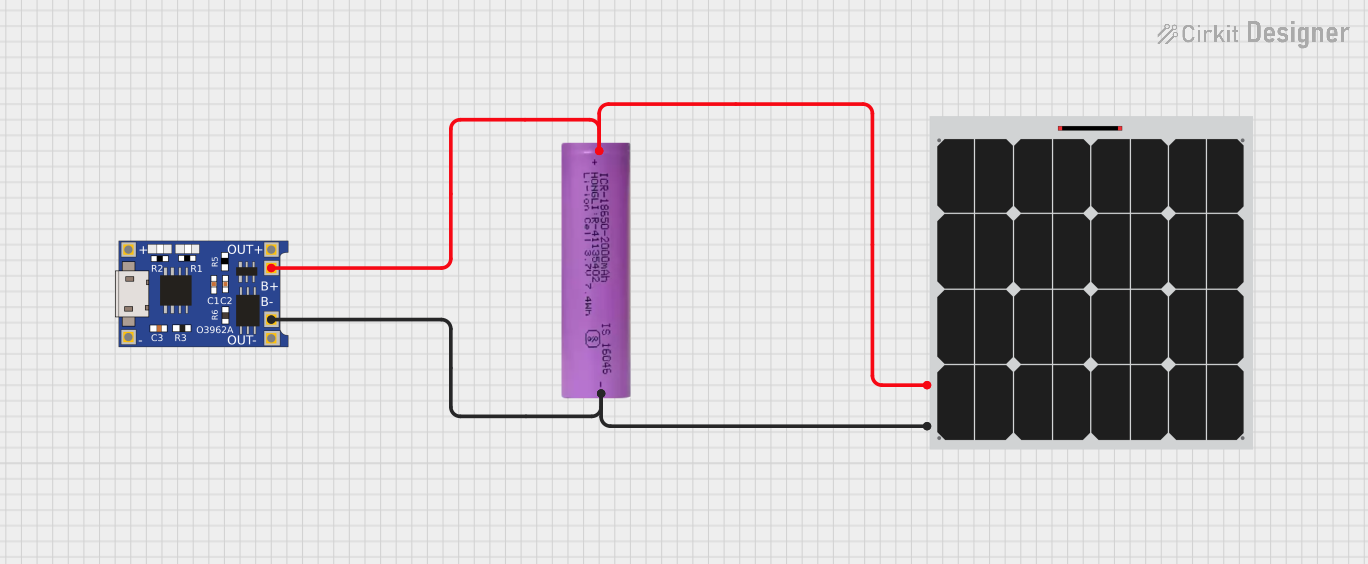
 Open Project in Cirkit Designer
Open Project in Cirkit Designer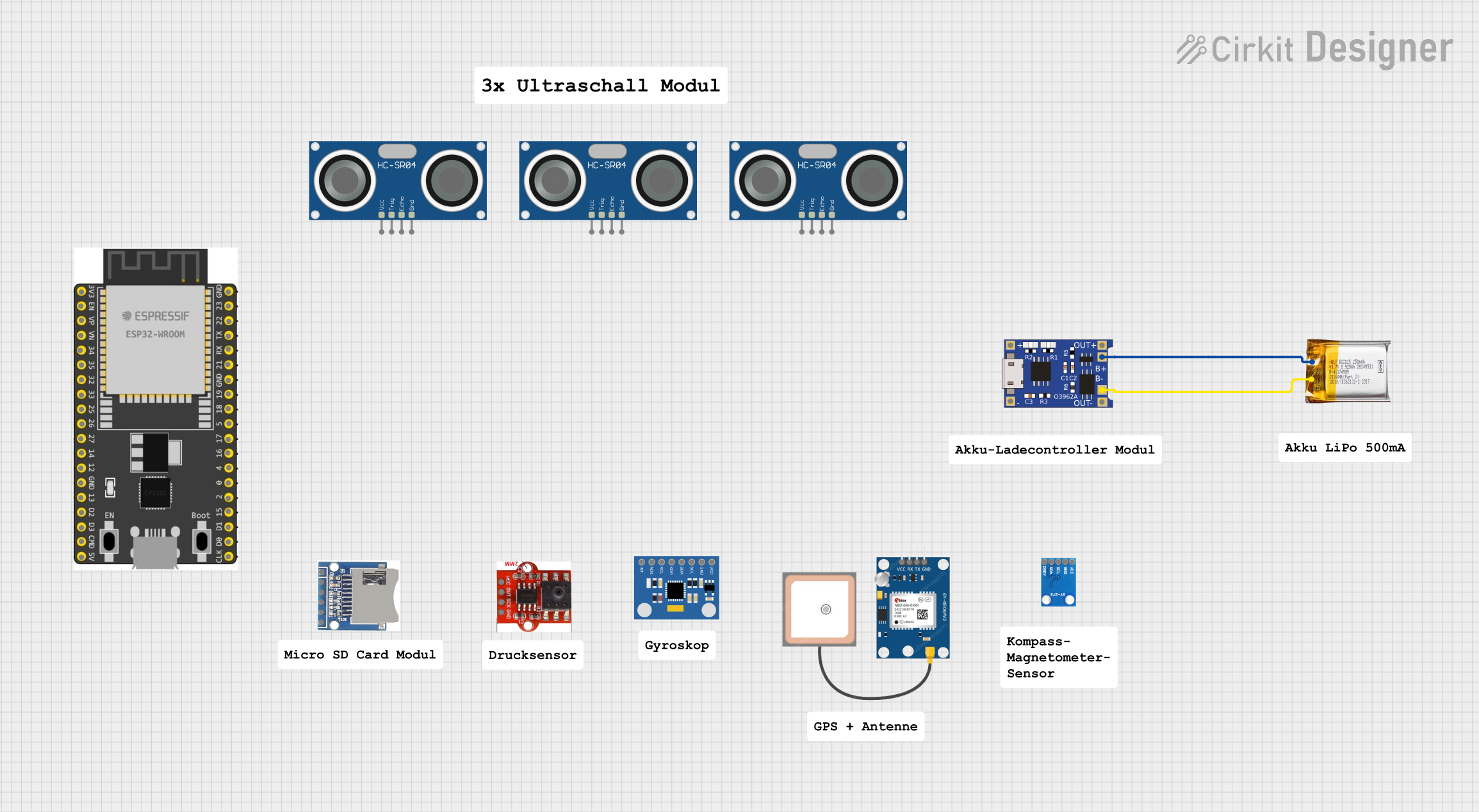
 Open Project in Cirkit Designer
Open Project in Cirkit Designer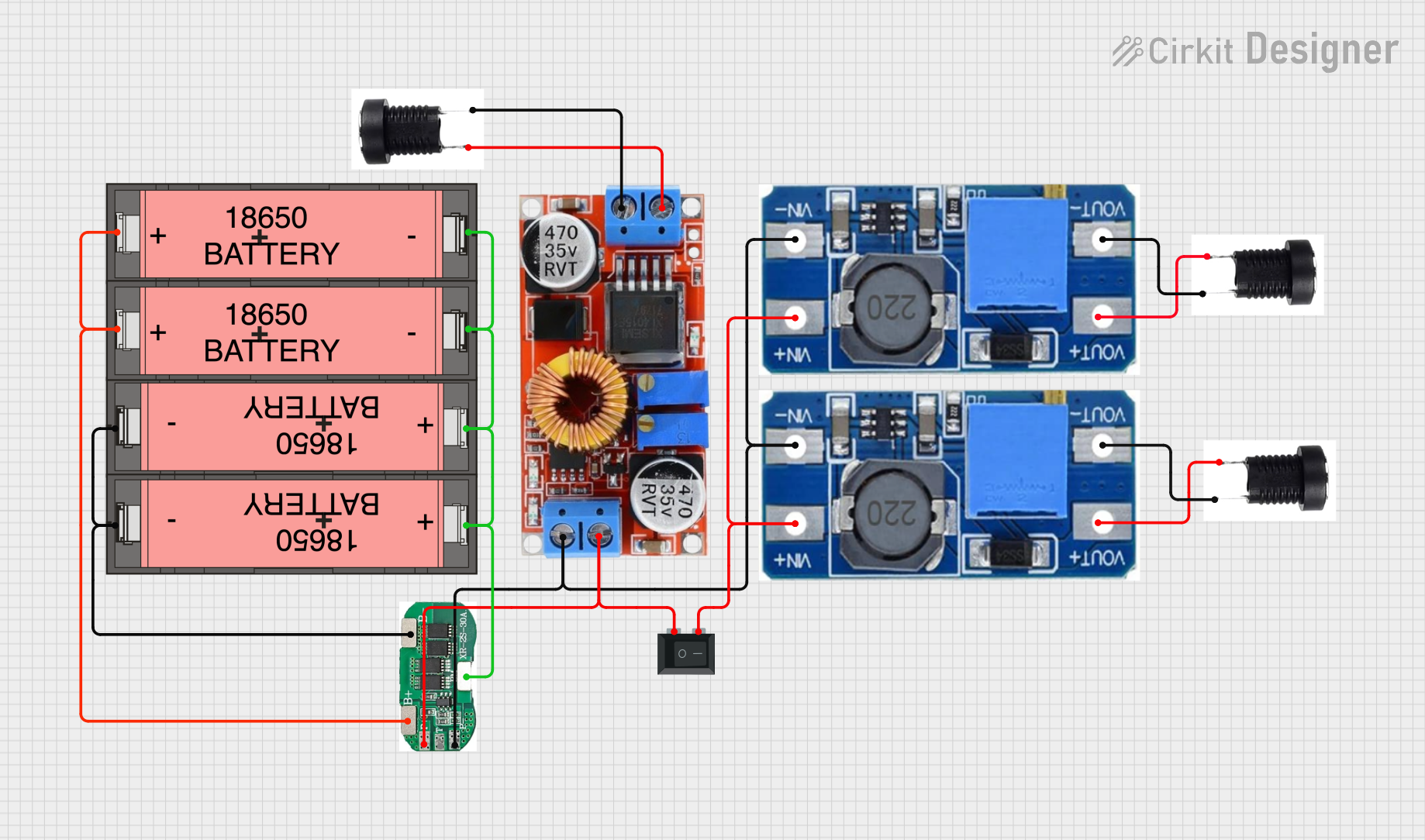
 Open Project in Cirkit Designer
Open Project in Cirkit Designer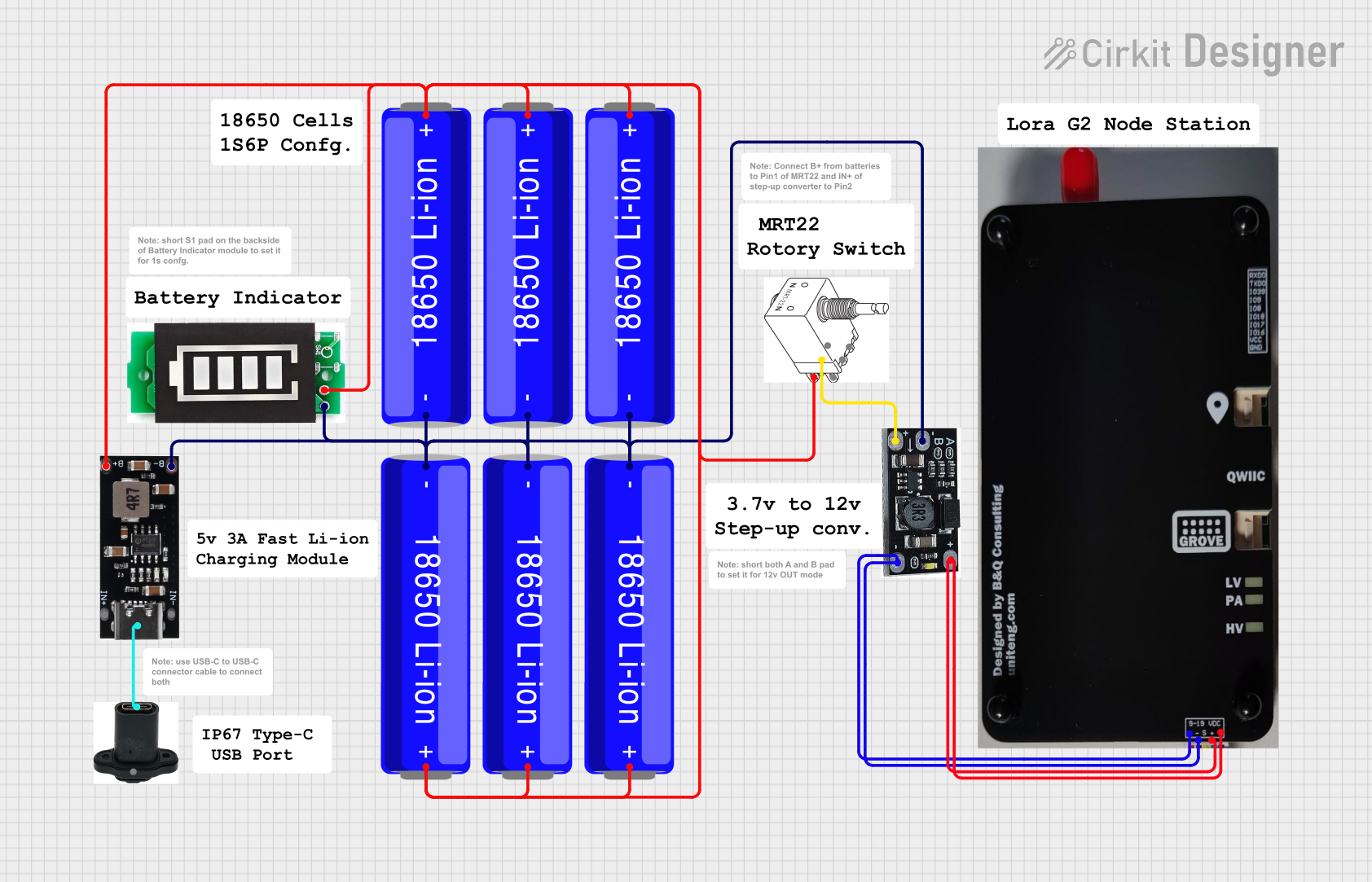
 Open Project in Cirkit Designer
Open Project in Cirkit DesignerExplore Projects Built with LI-PO BATTERY

 Open Project in Cirkit Designer
Open Project in Cirkit Designer
 Open Project in Cirkit Designer
Open Project in Cirkit Designer
 Open Project in Cirkit Designer
Open Project in Cirkit Designer
 Open Project in Cirkit Designer
Open Project in Cirkit DesignerCommon Applications:
- Smartphones, tablets, and laptops
- Remote-controlled (RC) vehicles and drones
- Wearable devices and fitness trackers
- Electric vehicles (EVs) and e-bikes
- Portable power banks and backup power systems
Technical Specifications
Below are the general technical specifications for a typical Li-Po battery. Note that specific values may vary depending on the manufacturer and model.
| Parameter | Specification |
|---|---|
| Nominal Voltage | 3.7V per cell |
| Fully Charged Voltage | 4.2V per cell |
| Discharge Cutoff Voltage | 3.0V per cell |
| Capacity Range | 100mAh to several thousand mAh |
| Maximum Discharge Rate | 1C to 100C (varies by model) |
| Charging Current | Typically 0.5C to 1C |
| Operating Temperature | 0°C to 60°C (discharge), 0°C to 45°C (charge) |
| Self-Discharge Rate | ~2-5% per month |
| Cycle Life | 300-500 cycles (varies by usage) |
Pin Configuration and Descriptions
Li-Po batteries typically have two or three wires for connection. Below is a table describing the pin configuration:
| Pin | Wire Color | Description |
|---|---|---|
| + | Red | Positive terminal (V+) |
| - | Black | Negative terminal (V-) |
| B | Yellow/White | Balance lead (optional, for multi-cell packs) |
Note: The balance lead is used in multi-cell Li-Po packs to ensure each cell is charged evenly.
Usage Instructions
How to Use a Li-Po Battery in a Circuit
- Connect the Terminals Properly: Ensure the red wire (positive) is connected to the positive terminal of your circuit, and the black wire (negative) is connected to the ground.
- Use a Battery Management System (BMS): Always use a BMS or a Li-Po charger circuit to prevent overcharging, over-discharging, or overheating.
- Monitor Voltage Levels: Avoid discharging the battery below its cutoff voltage (3.0V per cell) to prevent damage.
- Charging: Use a dedicated Li-Po charger that supports constant current (CC) and constant voltage (CV) charging modes. Set the charging current to 0.5C-1C of the battery's capacity.
Important Considerations and Best Practices
- Avoid Overcharging: Never charge a Li-Po battery above 4.2V per cell.
- Prevent Over-Discharge: Use a low-voltage alarm or cutoff circuit to avoid discharging below 3.0V per cell.
- Handle with Care: Do not puncture, crush, or expose the battery to fire or water.
- Storage: Store the battery at ~3.8V per cell (storage voltage) in a cool, dry place if not in use for extended periods.
- Use a Fireproof Bag: When charging or storing, place the battery in a Li-Po safe bag to reduce fire risks.
Example: Connecting a Li-Po Battery to an Arduino UNO
To power an Arduino UNO with a Li-Po battery, you can use a voltage regulator or a DC-DC step-down module to ensure the voltage is within the Arduino's operating range (7-12V via the barrel jack or 5V via the 5V pin).
Sample Code for Monitoring Battery Voltage
// This code reads the voltage of a Li-Po battery connected to an analog pin
// and calculates the battery level. Ensure a voltage divider is used if the
// battery voltage exceeds the Arduino's ADC input range (5V).
const int batteryPin = A0; // Analog pin connected to the battery
const float voltageDividerRatio = 2.0; // Adjust based on your resistor values
const float referenceVoltage = 5.0; // Arduino's ADC reference voltage
void setup() {
Serial.begin(9600); // Initialize serial communication
}
void loop() {
int rawADC = analogRead(batteryPin); // Read the analog value
float batteryVoltage = (rawADC / 1023.0) * referenceVoltage * voltageDividerRatio;
Serial.print("Battery Voltage: ");
Serial.print(batteryVoltage);
Serial.println(" V");
delay(1000); // Wait for 1 second before the next reading
}
Note: Use a voltage divider circuit to scale down the battery voltage if it exceeds 5V. For example, use two resistors (e.g., 10kΩ and 10kΩ) to divide the voltage by half.
Troubleshooting and FAQs
Common Issues and Solutions
Battery Not Charging
- Cause: Faulty charger or incorrect charging settings.
- Solution: Verify the charger is designed for Li-Po batteries and check the charging current and voltage settings.
Battery Swelling
- Cause: Overcharging, over-discharging, or physical damage.
- Solution: Stop using the battery immediately and dispose of it safely.
Short Battery Life
- Cause: Frequent over-discharge or charging at high currents.
- Solution: Avoid discharging below 3.0V per cell and charge at recommended rates.
Battery Overheating
- Cause: High discharge rates or faulty connections.
- Solution: Ensure the battery is rated for the required current and check for loose connections.
FAQs
Q: Can I use a Li-Po battery without a BMS?
A: It is not recommended. A BMS ensures safe operation by preventing overcharging, over-discharging, and overheating.
Q: How do I dispose of a damaged Li-Po battery?
A: Discharge the battery completely, then take it to a certified e-waste recycling facility.
Q: Can I charge a Li-Po battery with a regular power supply?
A: No, always use a dedicated Li-Po charger to ensure safe and proper charging.
Q: What is the difference between Li-Po and Li-Ion batteries?
A: Li-Po batteries use a polymer electrolyte, making them lighter and more flexible, while Li-Ion batteries use a liquid electrolyte and are generally more robust.